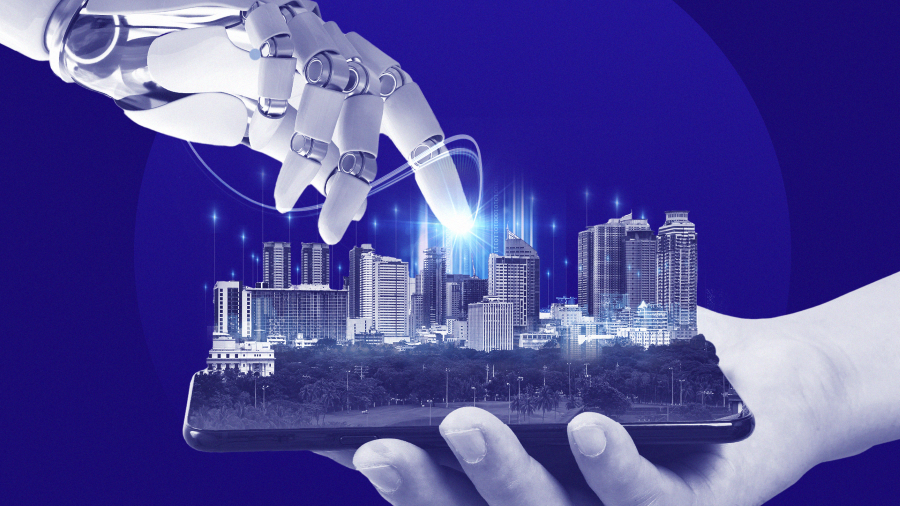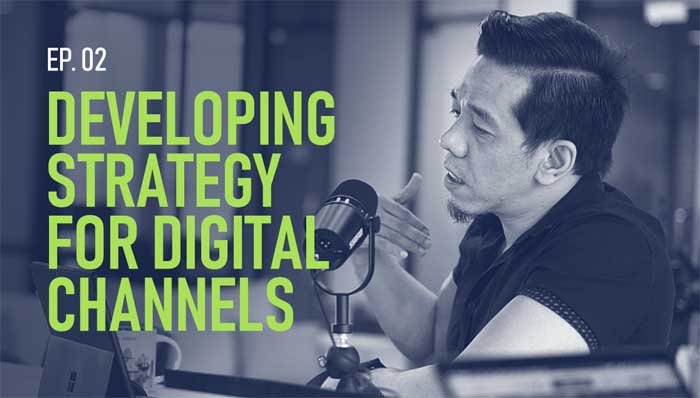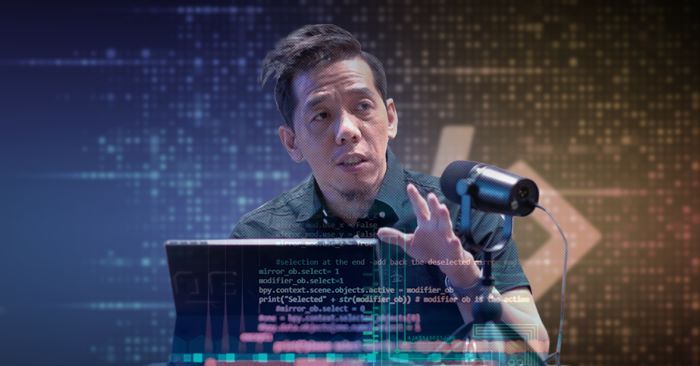AI Adoption in the Philippines

The past few years have been transformative for AI technology, with companies like Nvidia seeing unprecedented growth due to their pivotal role in developing GPUs that power AI systems.
In 2023 alone, Nvidia’s stock surged by 240%, and it has already grown another 60% in 2024. This explosion in AI-driven advancements includes notable innovations such as OpenAI’s ChatGPT-4, Google’s Gemini Live, Sora, and various other AI tools making headlines globally.
In this podcast episode, Truelogic Managing Partner Berns San Juan discussed the current AI adoption in the Philippines.
AI Adoption Across Generations
To understand AI adoption in the Philippines, it’s essential to start with the attitudes of different generations towards this technology. The sentiment towards AI is often mixed, marked by concerns over job displacement.
“Globally, people are wary of AI, thinking, ‘Is it going to replace me?’ It doesn’t help that AI pioneers acknowledge it will create new jobs but also replace some,” San Juan said.
However, the situation is quite different in the Philippines, where attitudes are notably positive across generations:
- Boomers: Remarkably, 68% of Filipino Boomers have a positive perception of AI.
- Gen X: 71% of Gen Xers view AI positively.
- Millennials: Surprisingly, Millennials match Gen X in positivity at 71%.
- Gen Z: Leading the charge, 78% of Gen Z have a positive outlook on AI.
In terms of actual usage, AI-powered tool adoption stands at about 48-49% nationally, with Gen Z again at the forefront at 52% usage within the last 30 days, often beyond academic purposes.
On the other hand, legislative efforts regarding AI in the Philippines have seen some progress but face significant hurdles. The earliest AI-specific legislation, proposed by Senator Bam Aquino in 2017, set the stage for ongoing discussions. As San Juan recalls, “The conversation Bam started ultimately culminated in RA 11293, the Philippine Innovation Act, which is more technology and progress-driven than AI-focused. Bam’s proposal was very AI-centric.”
In 2020, there were attempts to regulate AI to prevent the spread of deep fakes—a valid but somewhat alarmist concern given AI’s limited prevalence in the country at the time. Despite these efforts, both the 2017 and 2020 legislative proposals are currently stalled.
“Both are stuck, possibly because the average lawmaker age is around 52-53. Compared to other countries, that’s actually pretty young, but for one reason or another, it’s stuck in the house. But generally speaking, attitudes towards AI, are fairly on the positive side in the country,” he underscored.

Exploration of AI Development in the Philippines
Artificial Intelligence is revolutionizing industries worldwide, and the Philippines is no exception. While the nation has made strides in integrating AI into business operations, the development of native AI capabilities remains in its nascent stages.
Several Philippine companies have successfully incorporated AI to enhance their services and operations. Prominent among them are Coins.ph, Maya, and Grab. These companies leverage AI to optimize workflows, improve customer experiences, and scale their businesses efficiently. However, it’s important to note that the AI technologies they utilize are not homegrown. Instead, they rely on platforms like Databricks, an AI stack originating from San Francisco, USA.
“Kudos to these businesses in the Philippines for adopting AI, for putting it in their workflow, for allowing it to make an impact on their customers’ businesses, but the tech stack they’re using is not natively developed,” San Juan emphasized.
Databricks recently made headlines with the launch of an open-source large language model that outperformed ChatGPT 3.5 in several benchmarks. However, OpenAI’s release of ChatGPT 4.0 soon followed, showcasing the rapid pace of AI advancements globally. This highlights a significant point: while Philippine companies are adept at adopting AI, they are yet to develop their own sophisticated AI technologies.
Despite the challenges in developing native AI technologies, there is a silver lining. Philippine educational institutions are increasingly incorporating AI into their curricula, preparing the next generation to advance in this field. The University of the Philippines and the University of Batangas have introduced AI-related courses, fostering a new wave of AI talent. This is a commendable step towards equipping graduates with the skills needed to thrive in an AI-driven world.
San Juan also praised these educational initiatives, stating, “Shoutout to the University of the Philippines and shoutout to the University of Batangas. Both of them have actually added AI-related courses to their curriculum. Amazing.”
Furthermore, the Asian Institute of Management (AIM) has made significant contributions through its data sciences lab. The lab conducts cutting-edge research in analytics and intelligence, laying the groundwork for future AI developments. Such initiatives are crucial for building a robust AI ecosystem in the country.

While these advancements are promising, they often go unnoticed outside the tech community. The lack of widespread awareness about the progress in AI development in the Philippines is a missed opportunity. Highlighting these achievements could inspire more individuals and businesses to invest in AI, driving further innovation.
San Juan expressed a desire for more recognition of these efforts: “I wish we were a little noisier about the tech news in the country or that we found it a little more exciting.”
The Untapped Potential of Artificial Intelligence
“There’s a lot of potential for AI. Whether it’s homegrown or adopted, right? Like whether Coins and Maya and Grab adopt Databricks or whether there are companies that are developing their own AI tech stacks, there’s a lot of potential for AI in the country,” says San Juan. This sentiment underscores the flexibility and adaptability of AI, capable of integrating into existing platforms or fostering new technological ecosystems within the Philippines.
San Juan has been studying the top 1000 companies and the top 10 sectors in the country, noticing a significant opportunity for AI, particularly in the media and entertainment sector. Despite generating substantial revenue—over 28 billion pesos in 2022 and slightly over 30 billion in 2023—the sector has lagged in adopting new technologies. “This is where generative AI like Sora can really shine if our industry entertainment adapts fast enough,” he notes.
San Juan’s observations highlight a critical issue: the underutilization of AI in a sector that could benefit immensely from it. Filipinos are avid consumers of online media, often subscribing to international services like Netflix, YouTube Premium, and Disney Plus. This trend represents a missed opportunity for local entertainment companies to capture a share of the market by leveraging AI to create competitive, high-quality content.

The economic implications of AI adoption are staggering. San Juan references a study by Access Partnerships, estimating that AI could unlock $79.3 billion in productivity. “That is almost one fifth of the Philippine GDP. Almost. It’s not one fifth anymore. It would have been one fifth two years ago, but that’s almost one fifth of the Philippine GDP,” he explains. This potential for growth underscores the urgency for rapid AI adoption to propel the nation towards becoming a half-trillion-dollar economy.
San Juan commends the current administration for its progressive stance on technology and AI. “Props to the current president, right? Props to BBM. He’s been particularly progressive about technology and AI in particular,” he remarks, acknowledging the supportive policy environment that is crucial for fostering AI innovation and integration.
Several Filipino companies are already at the forefront of AI adoption, setting examples for others to follow. San Juan highlights some key players:
- e-comm: Partnering with local government units to make AI-enabled technologies accessible and understandable.
- FinScore: Leveraging AI for credit scoring and fraud detection.
- Instalim: Utilizing machine learning to create customized prosthetics for amputees.
- Mober, Beppo, Comunidad, and Rumarocket: Innovating in various fields with AI applications, from talent retention to logistics.
“These are not just people that are waiting for their next round of funding and burning through their cash. These are super viable businesses,” San Juan emphasizes, pointing to the tangible successes these companies have achieved through AI.
While the potential is vast, several challenges need addressing to realize AI’s full benefits. Improved infrastructure, particularly internet connectivity, is crucial. “While our internet infrastructure has gotten better, it’s still not the best,” San Juan acknowledges.
Moreover, maintaining meaningful conversations about AI’s practical applications is vital to prevent it from becoming just another buzzword. San Juan cautions against the fate that befell other technological trends like blockchain and cloud computing, which have seen their initial excitement wane over time.
Stay Ahead of the Curve into the World of AI
The outlook for AI in the Philippines remains promising. With the potential to unlock $79 billion in productivity and numerous companies leading the way, AI could drive unprecedented progress. San Juan concludes with optimism, “Maybe we can utilize the positive sentimentality that the Filipino population has towards AI to catapult us into progress like we’ve never seen before.”
Subscribe to the Truelogic DX Podcast on Spotify, Google, and Apple accounts to explore the latest news, trends, and insights that are shaping the future of digital marketing. Don’t miss out on discovering the untapped potential of artificial intelligence and how it can revolutionize industries and economies.










